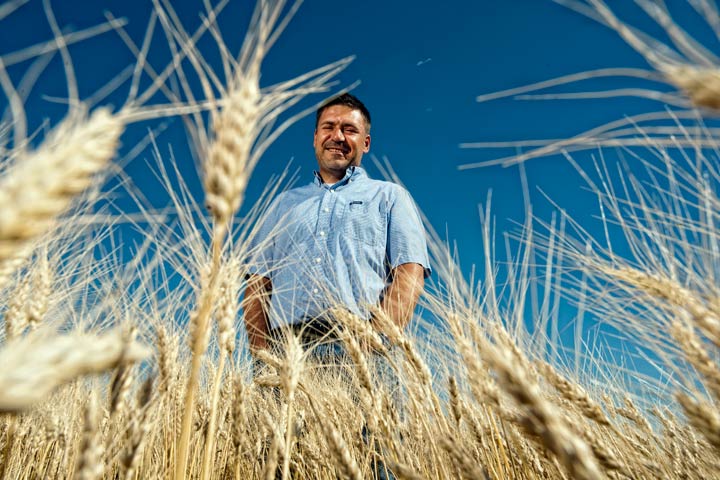University of Saskatchewan (U of S) researchers say they have discovered how to significantly reduce cadmium levels in durum wheat, ensuring the safety and nutritional value of the grain through selective breeding.

According to a recent Nature Genetics article, the U of S scientists helped an international consortium assemble the complete durum genome of the Svevo variety for the first time.
The durum wheat genome is four times as large as the one for humans.
U of S plant breeder Curtis Pozniak, along with University of Alberta scientists, identified the gene in durum wheat responsible for the accumulation of cadmium, a toxic heavy metal found in many soils.
“We can now examine the genes, their order and structure to assemble a blueprint that will provide an opportunity to understand how the genes work and communicate with one another,” Pozniak said in a press release.
“With this blueprint, we can now work quickly to identify genes that are responsible for the traits we select for in our breeding programs such as yield, disease resistance, and nutritional properties.”
Durum wheat, grown for pasta production, is mainly cultivated in Canada, Europe, United States, and South Asia.
Laura Reiter, who farms near Radisson, Sask., said this work is an exciting development for durum farmers.
“It will mean wheat breeders will be able to produce varieties with improved yields and resistance to disease, pests, and environmental stressors quicker than before,” Reiter, who is chair of the board of directors of the Saskatchewan Wheat Development Commission, said in a press release.
“The investment in this research on behalf of Saskatchewan durum farmers is expected to lead to productivity gains and will allow them to capture opportunities in markets that desire the high-quality grain that Saskatchewan farmers produce.”
WATCH BELOW: University of Saskatchewan team completes map of wheat genome

The research involved over 60 scientists from seven countries, including Italy.
The researchers revealed genes humans have been selecting over the centuries by comparing the new durum wheat sequence to its wild relative. They have also recovered beneficial genes lost during breeding.
Durum wheat was established as a prominent crop roughly 1,500 to 2,000 years ago in the Mediterranean area.
In 2018, U of S researchers also played a role in decoding the genome for the bread wheat variety, Chinese Spring, a discovery made by an international consortium.


Comments